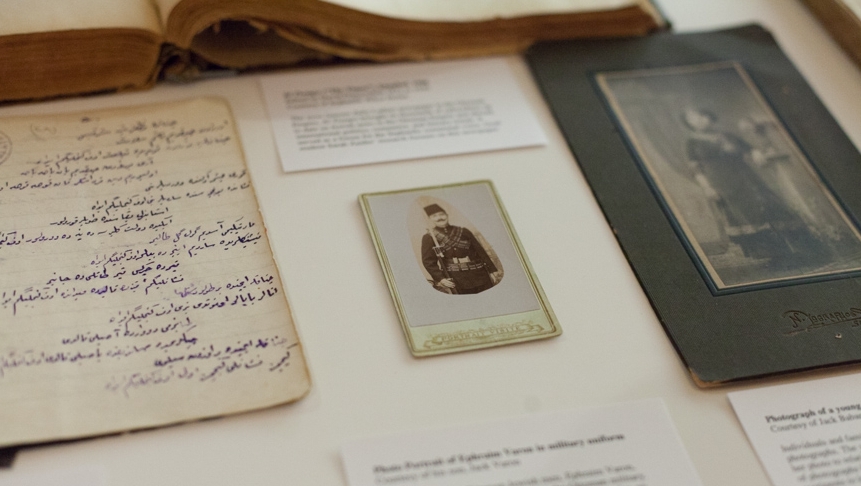
The Sephardic Studies Digital Library & Museum holdings on display at the UW Stroum Center 40th Anniversary Gala. Photo by Meryl Schenker Photography.
“A gota a gota se inche la bota.” (Drop by drop the barrel fills up.)
With more than one thousand items already catalogued, the Sephardic Studies Digital Library and Museum at the University of Washington is gradually becoming one of the largest repositories of original source materials pertaining to the Sephardic experience in the world. Over 625 items, totaling more than one hundred thousand pages, have already been digitized. The first twenty digital artifacts, including books and documents, are now available for free online through the University of Washington library.
The collection also includes more than 420 original books published in Ladino. Assembled from the bookshelves, closets, and basements of local residents and institutions in the greater Seattle region, this collection of books represents one of the largest Ladino libraries in the United States—and the most extensive repository of digitized Ladino texts in the country.
Spanning the start of the seventeenth century through the twentieth, the highpoint of the publication of Ladino books in our collection transpired from the late nineteenth century until the Second World War. This corresponds to the peak period of Ladino publishing, in general:

The books come from all over the eastern Mediterranean, especially the lands of the former Ottoman Empire, from Turkey and Greece to Israel and Egypt. Others were published in Vienna and Livorno, with even a few printed in the United States. This chart shows the breakdown of cities of origin:

Diverse Texts Bearing Traces of the Past
The books deal with a wide array of topics and themes: numerous Ladino translations of the Hebrew bible; weekly and holiday prayer books; various volumes of the famous Ladino work, a series of commentaries on the Bible known as the Meam Loez; ethical treatises and kabbalistic works; songbooks and poetry collections; theater scripts and novels; autobiographies and travelogues; political tracts dealing with Zionism or socialism; statutes of Jewish organizations and institutions; grammar books, elementary primers, and multilingual dictionaries; missionary publications; newspapers and magazines, and more.
There are many signs of life on the pages of these books. There are wine stains on the pages of prayer books containing the text of the kiddush (blessing over the wine), candle wax on the pages for avdala (the ceremony that concludes the Sabbath), and food smudges or fingerprints sometimes slightly obscuring the text of the birkat amazon (grace after meals). Burns from dropped ash or smears from tobacco snuff provide additional evidence that these books formed part of people’s everyday lives.
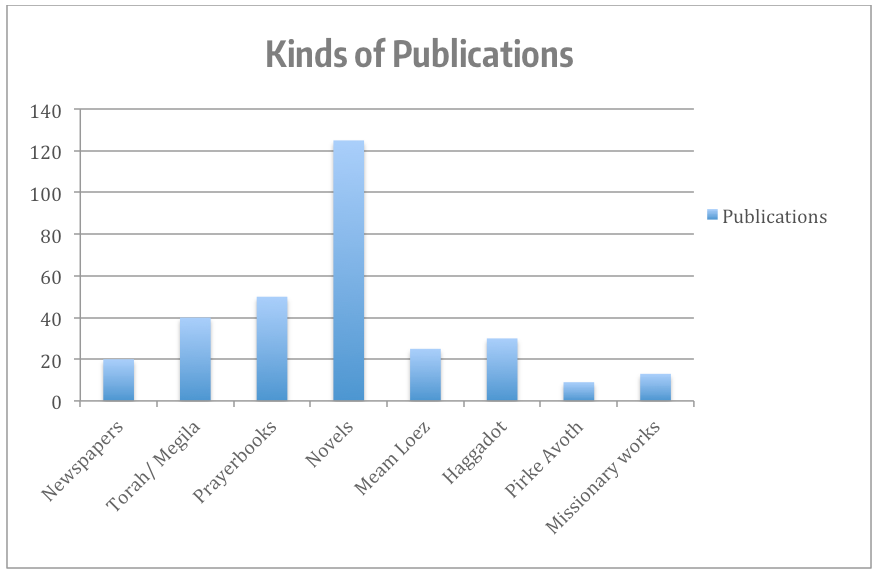
Many of the books contain remarkable marginalia. Penned by one or more of the owners, or sometimes the sellers, the marginalia often offer important clues about family history such as life cycle events (dates of births and deaths). Some of these notes offer genealogical outlines or trace family migrations. Others refer to certain synagogue honors bestowed to the book’s owner. The notes sometimes record who gave, purchased, sold or donated a book and thus we can trace the book’s own journey, from hand to hand, family to family, city to city, continent to continent. A wide variety of stamps—identifying private individuals, Jewish communal or institutional affiliations, particular governments or countries, or the names of publication houses—pepper the books’ pages. Signatures, doodles and children’s scribbles, mathematical date calculations and calendar conversions augment the visually rich material. Sometimes inside covers even served as scratch paper for quick notes.
Our collection also illustrates the variety of book binding strategies. Some bindings are held together with thin threads or have been rebound with staples, paperclips, or even scotch tape, duct tape, or glue. Often we receive them just as they were: with rusty paperclips, bus tickets, scraps of paper, old receipts, event notices, envelopes and other kinds of mail inserted between the pages here or there, serving as bookmarks employed by their last user. Some books are in mint condition, whereas others are in a state of total disrepair.
While we have done our best to digitally reproduce the nuances and tangible aspects of the materials, we realize, of course, that we cannot fully capture all of the tactile characteristics of the artifacts.
How We Began to Collect and Digitize
The processes of collecting, cataloguing and digitizing not only books, but also correspondence and family documents, photographs and other materials pertaining to the Sephardic experience, began two years ago. It started with old books preserved in Safeways bags at Sephardic Bikur Holim—now referred to lovingly as “The Safeway Archive”—and continued with the Sephardic Treasures “booth” we hosted at the Purim Bazaar at Congregation Ezra Bessaroth. Many additional items arrived from individuals and families in Seattle and beyond, who have kindly shared their family heirlooms and artifacts with us. Together they have made this project both possible and exceptionally rewarding. They may keep the originals, if they choose, and we create a digital copy for the world to see, to explore, to learn from, and more.
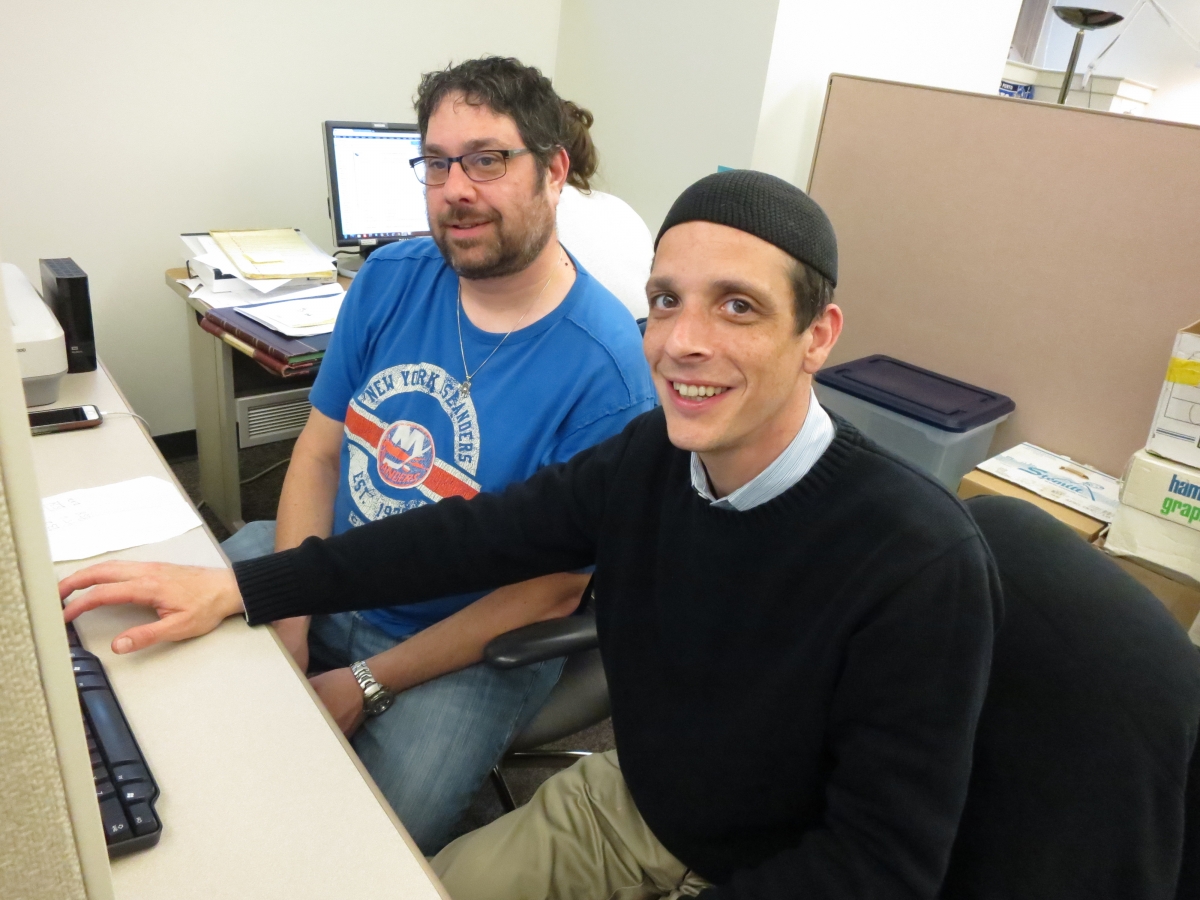
Ty Alhadeff (right) and Jeffrey Barton track the scanning process at UW Libraries Digital Initiatives. Photo by Hannah Pressman.
To make the digitization process possible and successful, the Sephardic Studies Program partnered with the Digital Initiatives Program at the University of Washington Libraries. Digital Initiatives has developed a number of other major digital projects on campus and in partnership with local communities, including the well regarded Svoboda Diaries Project that brings to digital life the travel accounts and life observations of members of a prominent nineteenth-century Iraqi family. The Digital Initiatives team also helped guide us through the digitization of our first books and documents with the assistance of several student technicians. Now, up to seven members of the Sephardic Studies team, including two students and an alumnus, continue to work on the project.
This academic year, the digitization processes have sped up considerably as a result of the hiring of Perfect Image Inc., a professional scanning company based in Kirkland, Washington. Well known for its rare, high tech equipment, including museum quality book scanners, Perfect Image previously completed major digitization projects for the Seattle Times, the Minnesota Historical Society, the Maui County Clerk, and the Army Corps in Galveston, Texas. Having set up one of their special book scanners in cooperation with Digital Initiatives at the UW libraries, Perfect Image has focused on scanning bound volumes from the Sephardic Studies collection—320 and counting. In this recent post, Hannah Pressman vividly describes the experience of having the notebook of her Rhodes-born great-grandmother scanned as part of the project.
A Note of Thanks
We are grateful to the following who have shared books and other artifacts with us, especially the considerable collections of Congregation Ezra Bessaroth and Sephardic Bikur Holim Congregation; Al Maimon via his own collection, as well as those of his father (Sam Bension Maimon), his uncle Isaac Maimon, Henry Benezra, and Mordo Israel; Richard Adatto from the collections of Albert Adatto and Emma Adatto-Schlesinger; Elazar Behar from the Rev. David J. Behar collection; David and Joy Maimon from the David Romey collection; Judy Amiel from the Rev. Sam Benaroya collection; and Larry Azose from the Leo Azose collection.
In addition we recognize and express our gratitude to others who have contributed books, documents and other artifacts: Ralph and Marcelle Adatto, Irv and Vivian Adatto, Josie Agoado, Al Benoliel, Joel and Maureen Benoliel, Al Shemarya, Joe Fintz, Albert M. Almeleh, Alfred Arkley, Ty and Emily Alhadeff, Hazzan Isaac Azose, Rabbi Michael Azose, Kathie Barokas, David Behar, Lynne Behar, Leon Cohen, Cynthia Flash, Daisy and Michael Israel, Dr. Devin Naar, Zach Levy, Eli Almo, Rabbi Elie Estrin, Grace Azose, Aryeh Greenberg, Sol Halfon, Steve and Rachely Hemmat, Menache Israel, Jack Babani, Jack Salem, Prof. Jere Bacharach, Emily Wilson, Dr. John Holcenberg, Azaria Rousso, Rick LaMarche, Leatrice Gutman (nee DeLeon), Leo Shahon, Lilly DeJaen, Al DeJaen, Linda (Tacher) Robke, Louise Angel Kiss, Madeline Buckley (nee Murad), Marcia Israel Weingarten, Marlene Souriano-Vinikoor, Mary Jane Galbraith, Neil Sheff, Rabbi Solomon Maimon, Rae Baroh , Robert Hallila, Rochelle Romano, Shayna Waldbaum, Sol Halfon, Sol Niego, Susan Solomon, Steve Baral, Susan Hasson, Jack Varon, Sara Benveniste, Fran Israel.
The Sephardic Studies Program is grateful for the support of the Sephardic Studies Founders’ Circle: Ike Alhadeff Foundation, Eli and Rebecca Almo, Joel and Maureen Benoliel, Harley and Lela Franco, and Richard and Barrie Galanti.
We are also grateful to our colleagues and partners at UW Libraries, including Ann Lally and Anne Graham in the Digital Initiatives Program, and Betsy Wilson, Vice Provost for Digital Initiatives and Dean of University Libraries.
Lastly, we would like to thank the UW Stroum Center for Jewish Studies for providing the support and resources to help turn our plans for the Digital Library into reality.

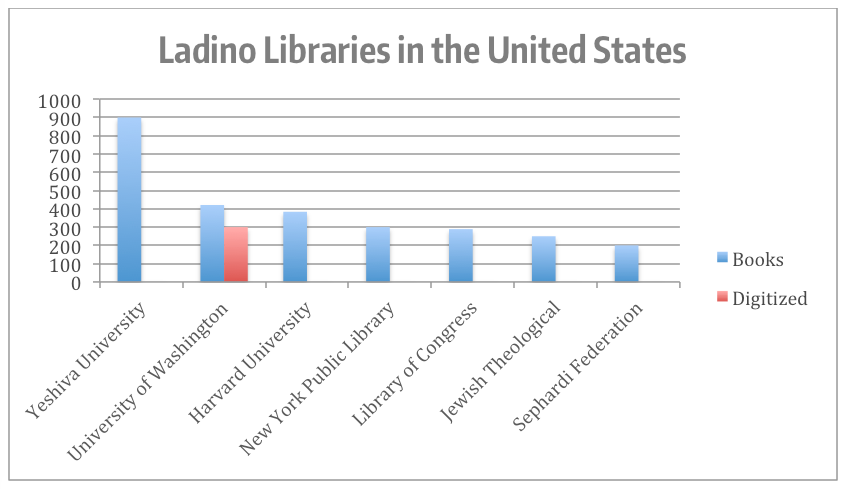
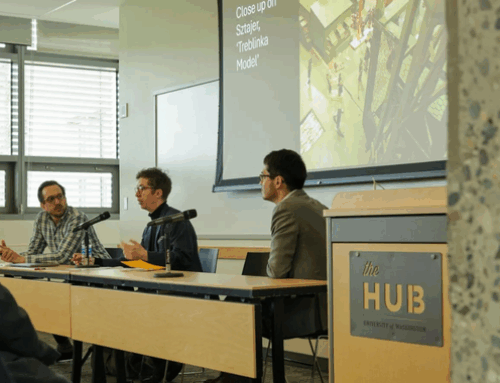


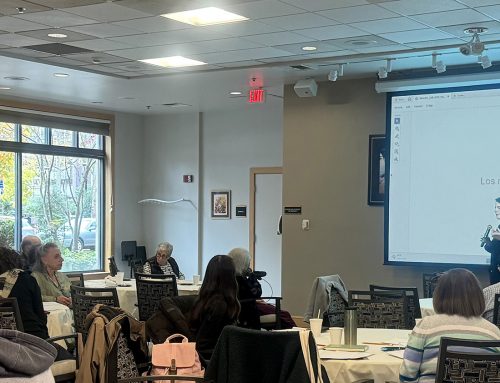


[…] Reed more… […]
I am very impressed by your work. I speak Ladino ( I know I should use the term Judeo-espagnol) but my parents who were from Rhodes either called their language, “Spañol” or “Ladino”.
I have been coming to Rhodes for the last four Summer to work for the synagogue and the Jewish museum . Unfortunately, practicly nothing has remained in Rhodes in any form of writings. It has all vanished. We know that Jewish life stopped on the 23 of July 1944 when the Jewish community was taken to Auschwitz. People left their home behind, the synagogues, their deads….yet, although locals moved in Jewish homes as soon as our people were sent away to be murdered by the Nazis, it hurts me that I cannot put my hands on “anything”that reminds me of past Jewish life in Rhodes. The little we have in the synagogue should be preserved “properly”.
Anyway, congratulations on the work you have performed.
Isaac Habib
[…] See Also: By the Numbers: Building the Sephardic Studies Digital Library (via U. of Washington Sephardic Studi… […]